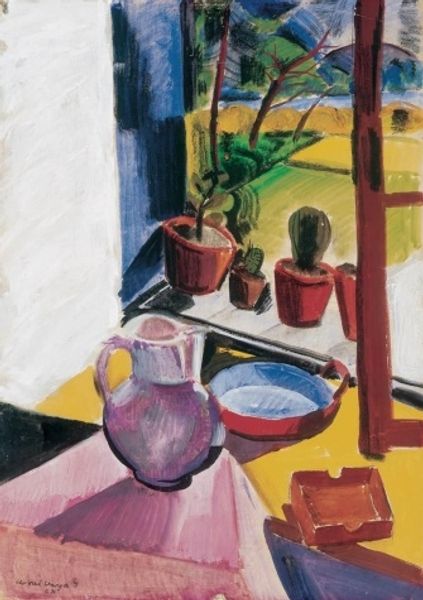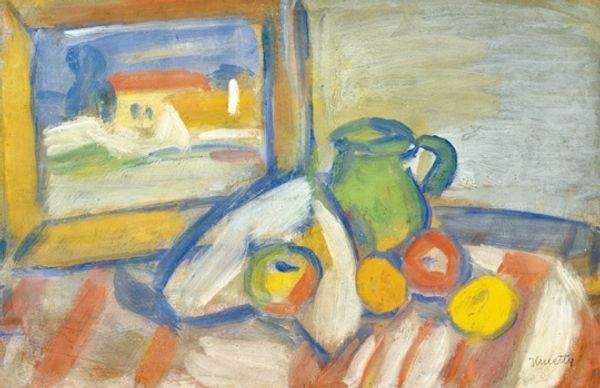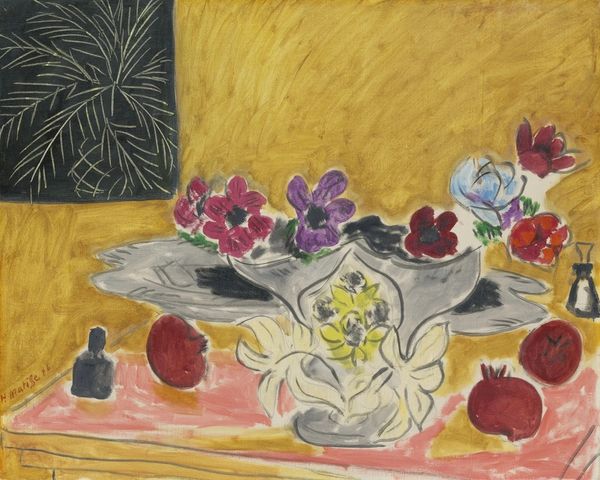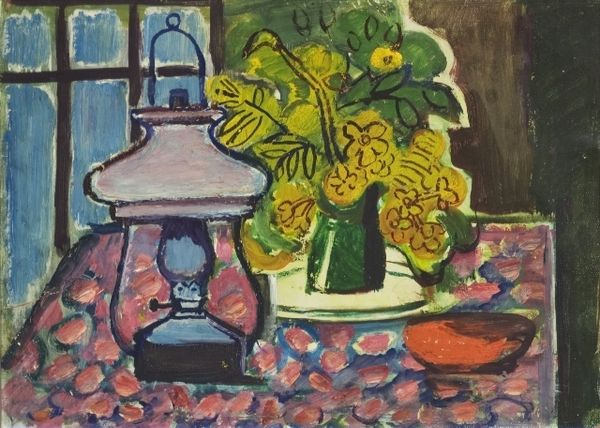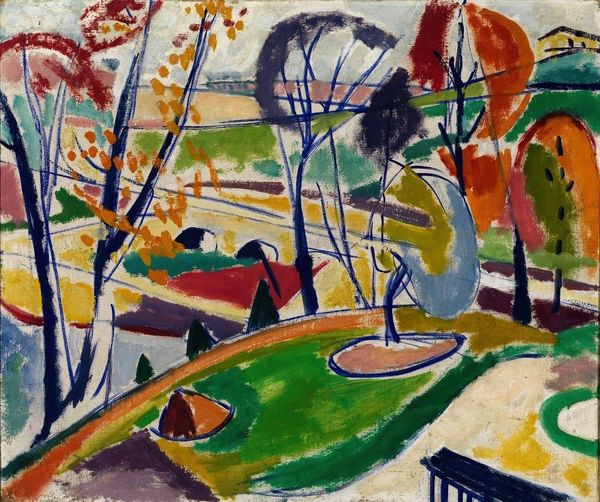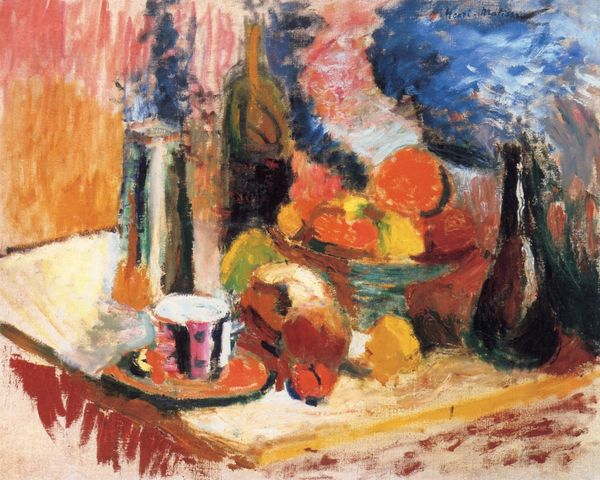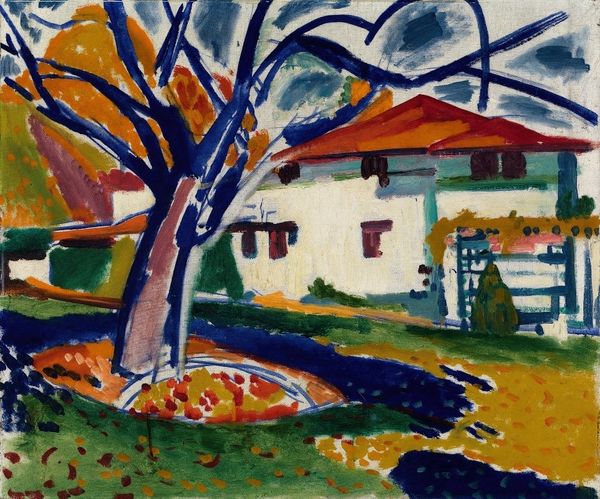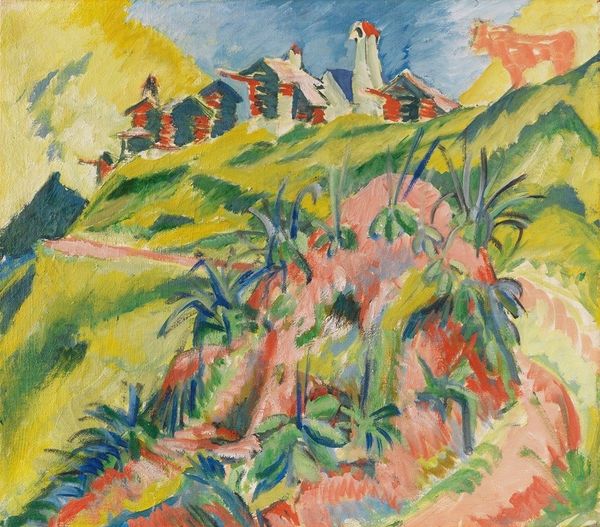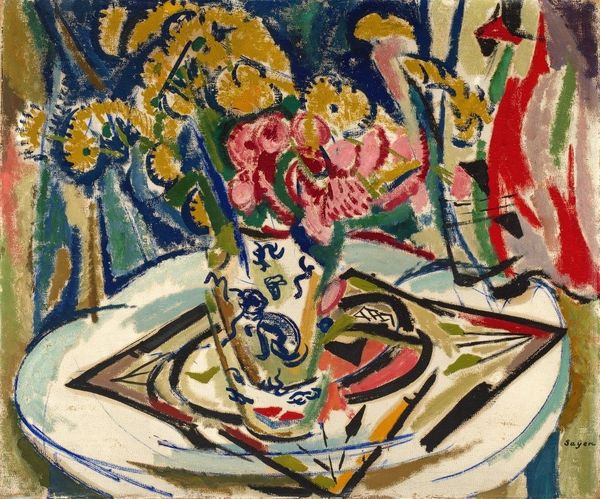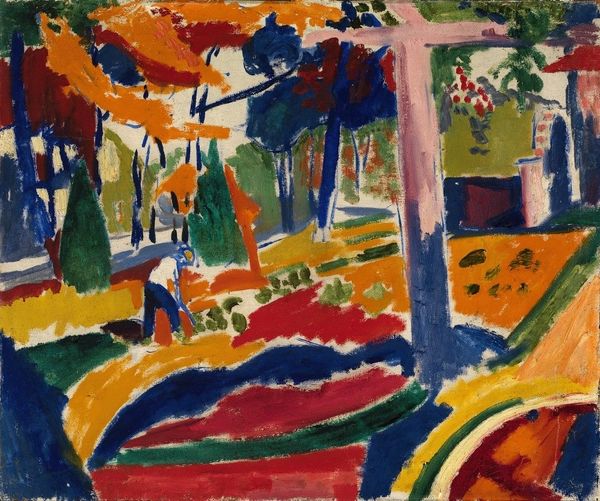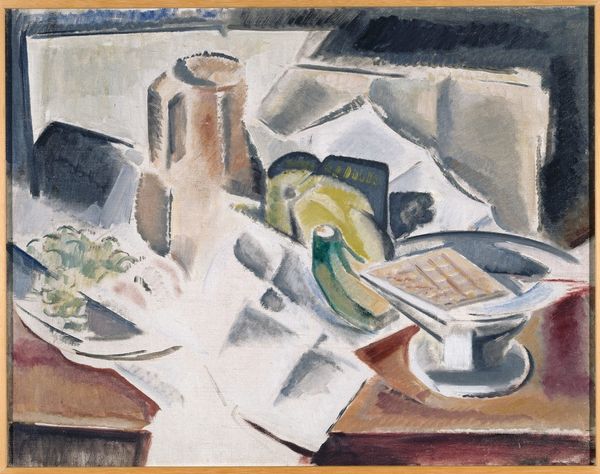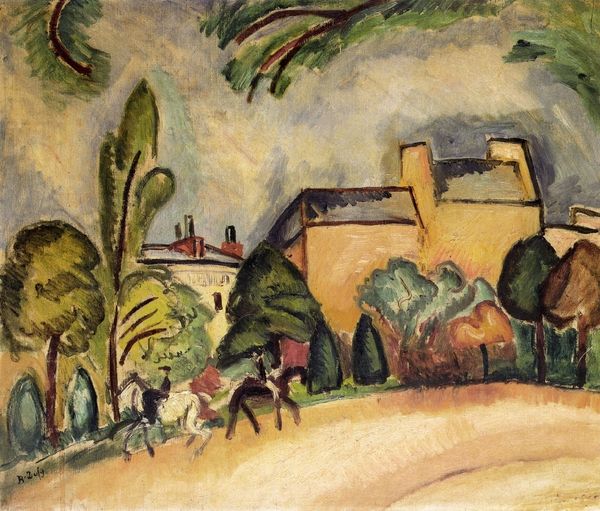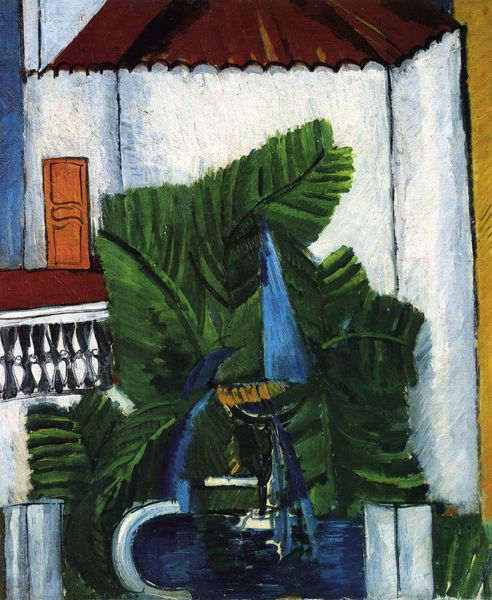
Copyright: Public domain US
Curator: Before us is Henri Matisse's "The Green Pumpkin," painted around 1916. It's an oil on canvas, characteristic of his explorations in post-impressionism. Editor: The immediate feeling is domestic tranquility, albeit slightly…unsettling. The flatness and those strong greens fight against a sense of peaceful observation. It’s not the conventional autumnal celebration you might expect. Curator: The pumpkin itself is rendered almost like a symbolic icon, wouldn’t you agree? Set against the open window looking at the garden beyond. I can't help but feel there is this domesticity of harvest mixed with nature. It evokes safety, sustenance, the basic foundations of life represented there. Editor: Absolutely, the pumpkin as this idealized still life object, elevated but grounded. Given its placement right at the threshold, there's an undeniable interplay of inside and outside—the cultivation within the home juxtaposed against wild growth. Consider how the impasto application emphasizes the materiality, it grounds this idealized domesticity. Curator: And think about how Matisse uses the window itself – almost as a barrier and frame at once. There's a long art history that uses the open window as a symbol, traditionally that it is a symbol of vision and perspective, but in this case it emphasizes domestic space with new boundaries brought on by global upheaval with World War I at its height when it was created. The objects are still here and accessible though nature continues uninterrupted, in many ways mocking at this war-torn human reality. Editor: I agree. The material reality becomes paramount in light of socio-political circumstances. The choice of simple materials and an everyday scene are elevated as testaments to existence through materiality. What is grown is both literally food and what makes Matisse’s food for art. The raw materials of art sustain meaning for those displaced by violence. Curator: Indeed, what you grow, both literally and figuratively, nourishes in periods of violence and grief. Editor: It really highlights how Matisse collapses hierarchies, doesn't it? Both artistic and societal, elevating the simple object to something charged and meaningful. Curator: A testament to life, painted on canvas. Editor: Making us reflect on sustenance both physically and creatively in ways that only Matisse can do.
Comments
No comments
Be the first to comment and join the conversation on the ultimate creative platform.
